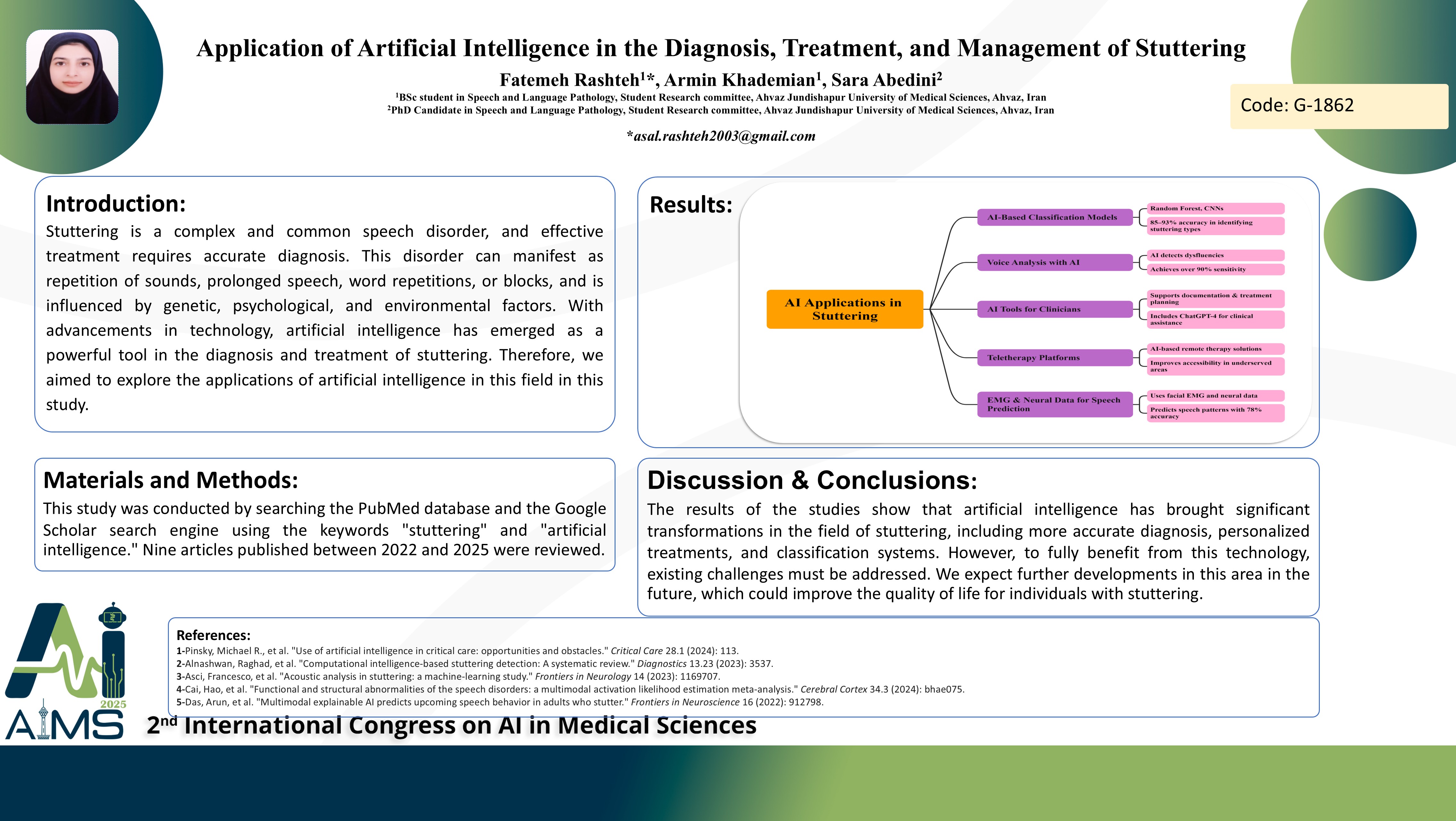Application of Artificial Intelligence in the Diagnosis, Treatment, and Management of Stuttering
Code: G-1862
Authors: Fatemeh Rashteh * ℗, Armin Khademian, Sara Abedini
Schedule: Not Scheduled!
Tag: Clinical Decision Support System
Download: Download Poster
Abstract:
Abstract
Background and aims: Stuttering is a complex and common speech disorder, and effective treatment requires accurate diagnosis. This disorder can manifest as repetition of sounds, prolonged speech, word repetitions, or blocks, and is influenced by genetic, psychological, and environmental factors. With advancements in technology, artificial intelligence has emerged as a powerful tool in the diagnosis and treatment of stuttering. Therefore, we aimed to explore the applications of artificial intelligence in this field in this study. Method: This narrative review aimed to identify studies on the application of artificial intelligence (AI) in stuttering diagnosis and treatment. Searches were conducted in PubMed, Scopus, and Google Scholar using combinations of keywords: “stuttering,” “artificial intelligence,” “machine learning,” “speech therapy,” and “AI in speech disorders.” Inclusion criteria were English-language, peer-reviewed original articles or systematic reviews published between January 2022 and January 2025, focusing on AI-based assessment or intervention in stuttering. After removing duplicates and screening 42 records, 9 articles met all criteria and were included in the final review. Results: The reviewed studies revealed several key applications of AI in stuttering. Classification models (e.g., Random Forest, CNNs) accurately identified stuttering types with 85–93% accuracy. Voice analysis using AI achieved over 90% sensitivity in detecting dysfluencies. AI tools, including ChatGPT-4, supported clinicians with documentation and treatment planning. AI-based teletherapy platforms improved accessibility and satisfaction, particularly in underserved areas. Additionally, one study used neural and facial EMG data to predict speech patterns with 78% accuracy. Conclusion: The results of the studies show that artificial intelligence has brought significant transformations in the field of stuttering, including more accurate diagnosis, personalized treatments, and classification systems. However, to fully benefit from this technology, existing challenges must be addressed. We expect further developments in this area in the future, which could improve the quality of life for individuals with stuttering.
Keywords
Artificial Intelligence, Stuttering, Machine Learning
